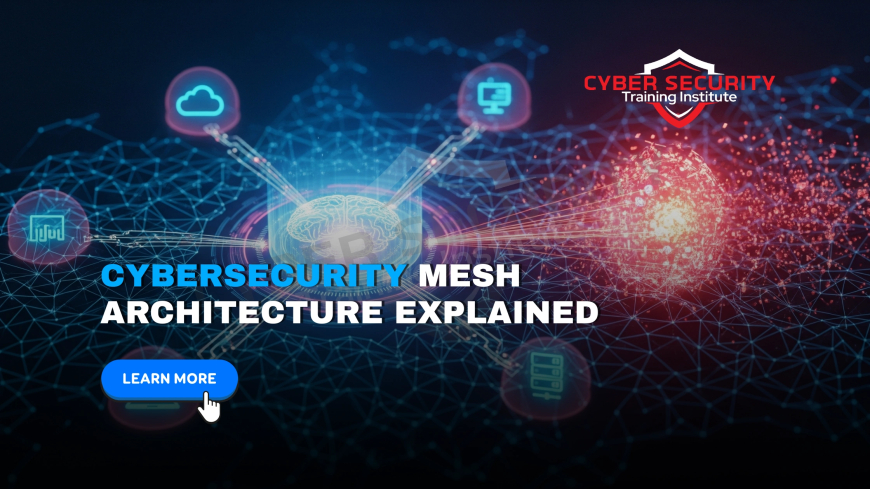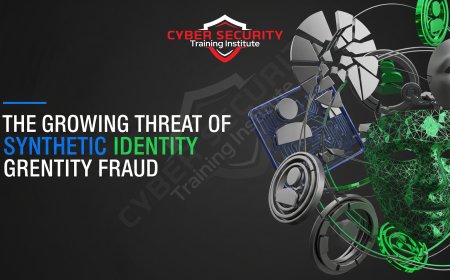What Are Cybersecurity Mesh Architectures and How Do They Work?
Imagine your company’s cybersecurity as a sprawling city with countless entry points—computers, cloud servers, smartphones, even smart thermostats. Now picture a traditional security system as a single, massive wall trying to protect it all. It’s tough to maintain, and one breach can bring it down. Enter Cybersecurity Mesh Architecture (CSMA), a new approach that’s like giving every building its own smart lock, all connected to a central system that learns and adapts. As someone who’s watched cybersecurity evolve, I’m excited about how CSMA is shaking things up in 2025, offering a flexible, scalable way to tackle today’s complex threats. With cybercrime costs hitting $10.5 trillion annually, businesses need smarter defenses. 0 This blog breaks down what CSMA is, how it works, and why it’s becoming a go-to for companies big and small. Whether you’re new to tech or a seasoned IT pro, you’ll find clear insights here to understand this game-changing strategy. Let’s dive in and explore how CSMA is rewriting the rules of digital protection.

Table of Contents
- What Is Cybersecurity Mesh Architecture?
- Core Components of CSMA
- How Does CSMA Work?
- Benefits of Cybersecurity Mesh
- Challenges and Limitations
- Real-World Use Cases
- CSMA vs. Traditional Cybersecurity Approaches
- How to Implement CSMA
- Future Trends in CSMA for 2025 and Beyond
- Conclusion
- FAQs
What Is Cybersecurity Mesh Architecture?
Cybersecurity Mesh Architecture, or CSMA, is a modern approach to securing digital systems by creating a flexible, interconnected network of security tools rather than relying on a single, rigid defense system.
Think of CSMA as a web of security checkpoints. Instead of one central gatekeeper, every device, user, or application has its own security layer, all talking to each other through a shared system. This setup makes it easier to spot and stop threats, no matter where they strike. For beginners, imagine a neighborhood watch where every house has a camera, and they all share alerts instantly to keep the area safe.
CSMA is built around the idea of decentralization, meaning security isn’t tied to one location or server. It’s perfect for 2025, where hybrid work, cloud computing, and connected devices are the norm. By 2024, 50% of enterprises were exploring CSMA, a sign it’s catching on fast.
Core Components of CSMA
CSMA isn’t one tool but a system of parts working together. Here are the key pieces:
- Distributed Identity Fabric: Every user and device gets a unique digital ID, verified constantly to ensure only authorized access.
- Security Analytics: AI and machine learning analyze data across the network to spot threats, like unusual login patterns.
- Policy Enforcement Points: Each device or app enforces security rules, like blocking suspicious connections.
- Centralized Management: A dashboard or hub coordinates all these elements, giving teams a clear view of threats.
These components act like a team of guards, each covering a different area but sharing info to keep the whole system secure. For example, if a hacker tries to access a cloud server, the identity fabric flags it, analytics confirm the threat, and enforcement points block it—all coordinated through the central hub.
How Does CSMA Work?
CSMA works by spreading security across an organization’s entire digital landscape, connecting every piece to create a unified defense.
- Identity Verification: Every user, device, or app is checked using digital IDs, often with multi-factor authentication (MFA) like a password plus a phone code.
- Data Collection: Security tools gather real-time data (called telemetry) from endpoints (like laptops), networks, and cloud services.
- Threat Detection: AI analyzes this data to spot anomalies, like a login from an unusual country.
- Response: The system automatically responds—say, by isolating a compromised device—while alerting IT teams.
- Central Oversight: A management platform ties it all together, letting teams monitor and adjust defenses.
In practice, imagine an employee working from a coffee shop. CSMA verifies their identity, monitors their laptop’s activity, and checks the network for threats. If a hacker tries to intercept, the system catches it early and locks them out. This distributed approach is faster and more flexible than old-school methods, reducing breach risks by 30% in some cases.
Benefits of Cybersecurity Mesh
CSMA offers big wins for businesses facing modern threats:
- Flexibility: Works across on-premises, cloud, and hybrid setups, ideal for remote work.
- Faster Response: AI-driven detection cuts response times from hours to minutes.
- Scalability: Easily adds new devices or users without overhauling the system.
- Reduced Complexity: Unifies tools, reducing the need for multiple dashboards.
- Better Visibility: Gives a clear view of threats across all assets, catching 20% more incidents than traditional setups.
For small businesses, CSMA levels the playing field, offering enterprise-grade security without massive budgets. It’s like upgrading from a single alarm to a smart home security network.
Challenges and Limitations
CSMA isn’t perfect. Integration can be tough—older systems may not play nice, requiring costly upgrades. It also demands skilled staff, and with a 4-million-person cybersecurity skills gap, that’s a hurdle.
Initial setup costs can be high, especially for small firms. Over-reliance on AI risks missing nuanced threats, and managing distributed systems can get complex. Privacy concerns arise too, as constant monitoring might worry employees. Despite these, CSMA’s benefits often outweigh the drawbacks with proper planning.
Real-World Use Cases
CSMA is already making a difference. In healthcare, a hospital used CSMA to secure patient data across cloud apps and IoT devices like heart monitors, cutting breach risks by 25%.
Retail giants use CSMA to protect e-commerce platforms, ensuring customer data stays safe across global servers. Even small businesses benefit— a startup used a cloud-native CSMA to secure its remote team, avoiding a ransomware hit.
CSMA vs. Traditional Cybersecurity Approaches
Traditional cybersecurity often relies on a perimeter-based model—like a castle moat—protecting everything inside one boundary. CSMA, by contrast, is decentralized, securing each asset individually. Here’s a comparison:
| Aspect | Traditional Approach | CSMA |
|---|---|---|
| Structure | Centralized, perimeter-based | Decentralized, distributed |
| Scalability | Limited, hard to expand | Highly scalable |
| Response Time | Slower, manual processes | Faster, AI-driven |
| Complexity | Multiple disconnected tools | Unified platform |
CSMA’s edge lies in its adaptability for modern, spread-out IT environments.
How to Implement CSMA
Adopting CSMA takes planning but isn’t rocket science:
- Assess Needs: Map your assets—devices, clouds, apps—to identify gaps.
- Choose Tools: Pick vendors like Cisco or Microsoft offering CSMA-compatible platforms.
- Integrate Gradually: Start with critical systems, like cloud servers, then expand.
- Train Teams: Upskill staff on managing distributed security.
- Monitor and Adjust: Use the central dashboard to tweak policies as threats evolve.
Start small, test, and scale. It’s like building a house—lay a strong foundation first.
Future Trends in CSMA for 2025 and Beyond
CSMA is set to grow in 2025. AI will get smarter, predicting threats before they hit.
Quantum-resistant encryption will counter emerging tech threats. IoT security will expand as smart devices multiply. Regulations will push CSMA adoption, especially in Europe with stricter data laws. These trends make CSMA a cornerstone for future-proofing cybersecurity.
Conclusion
Cybersecurity Mesh Architecture is transforming how we protect digital systems, offering a flexible, interconnected defense against today’s complex threats. By securing every device, user, and app individually while tying them together with AI and centralized management, CSMA tackles the challenges of cloud, remote work, and IoT head-on. From healthcare to finance, real-world cases show it’s reducing risks and boosting resilience. Sure, challenges like integration and costs exist, but the benefits—scalability, speed, visibility—make it worth it. As we move into 2025, CSMA is a must-have for businesses aiming to stay ahead of hackers. Whether you’re a beginner or a tech veteran, now’s the time to explore how this approach can safeguard your digital world.
FAQs
What is Cybersecurity Mesh Architecture?
It’s a security approach that connects tools across devices, clouds, and networks for flexible, unified protection.
How does CSMA differ from traditional cybersecurity?
CSMA is decentralized and scalable, unlike centralized, perimeter-based traditional systems.
What are the main parts of CSMA?
It includes digital IDs, security analytics, policy enforcement points, and a central management hub.
Why is CSMA good for remote work?
It secures devices anywhere, ensuring safe access for remote employees.
Can small businesses use CSMA?
Yes, cloud-native CSMA solutions are affordable and scalable for small firms.
How does CSMA use AI?
AI analyzes data to detect and respond to threats faster than humans.
What’s a digital identity fabric?
It’s a system giving every user and device a unique ID for constant verification.
Does CSMA reduce breach risks?
Yes, by up to 30% through better visibility and response.
What industries benefit from CSMA?
Healthcare, finance, retail, and any sector with spread-out IT systems.
Is CSMA expensive to implement?
Initial costs can be high, but long-term savings come from fewer breaches.
How does CSMA handle cloud security?
It integrates cloud data with other systems for real-time threat monitoring.
What’s a policy enforcement point?
It’s a security rule applied at each device or app, like blocking suspicious access.
Can CSMA stop ransomware?
It can detect and isolate ransomware early, minimizing damage.
Why is CSMA scalable?
It easily adds new devices or users without major changes.
What are the challenges of CSMA?
Integration with old systems and the need for skilled staff are key hurdles.
How does CSMA improve visibility?
It provides a unified view of threats across all assets, catching more incidents.
Will CSMA replace other security tools?
No, it complements tools like firewalls and XDR for better protection.
What’s the future of CSMA?
AI advancements and zero-trust integration will drive adoption by 2027.
Does CSMA help with compliance?
Yes, its centralized management aids in meeting regulations like GDPR.
How do I start with CSMA?
Assess your IT setup, choose a vendor, and integrate gradually while training staff.
What's Your Reaction?
 Like
0
Like
0
 Dislike
1
Dislike
1
 Love
0
Love
0
 Funny
0
Funny
0
 Angry
0
Angry
0
 Sad
0
Sad
0
 Wow
0
Wow
0






![How to Install RHEL 10 on VMware/VirtualBox [Tutorial]](https://www.cybersecurityinstitute.in/blog/uploads/images/202509/image_430x256_68b56dc967a4a.jpg)








